Selling successfully on Amazon comes down to choosing products that are profitable, in-demand, and not dominated by well-established brands.
In this article, we’ll explore 10 of the best product categories to sell on Amazon and walk you through the steps of how to find products to sell. We’ll also explore sourcing options and tools to help you build and run a profitable store.
Key Takeaways
The best products to sell on Amazon typically have the following specifications:
- Target sale price between $10 and $50
- Profit margin of 25%–35% or greater
- Lightweight (including packing materials) and cheap to ship
- Durable low-maintenance items that are easy to transport
- Evergreen popularity (meaning items that aren’t seasonal, trendy, or holiday-specific)
- Superior quality compared to the competition
What to Sell on Amazon: Our Picks
The best products to sell on Amazon are lightweight, sturdy, popular, and evergreen because they are likely to yield the best profit—which is especially important given the fees and expenses that come along with selling on Amazon.
As you read through the list, keep in mind the potential profits and margins listed don’t account for fulfillment costs—which vary from seller to seller depending on your fulfillment strategy.
With these factors and qualities in mind, consider the following ideas for successful products to sell on Amazon:
Home & Kitchen
The Home & Kitchen category is the top category where sellers have the most products (35%). While selling in a popular product category can be tough because of increased competition, you can do more product research before choosing a product.
Fear not, though, as this category is equally or more popular among buyers. Probably everyone you know uses some type of home or kitchen product every day. This category also has a lower barrier to entry on Amazon because it is not restricted to new sellers.
Most products don’t have complicated requirements and are easy to manufacture or source.
Insulated Steel Vacuum Tumbler | |
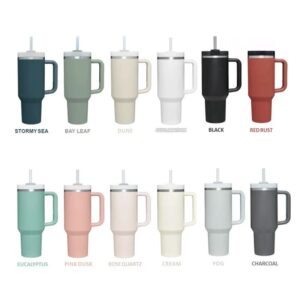 |
|
Insulated vacuum tumblers have become more than a passing trend ever since more and more people are embracing reusable bottles as a way to avoid plastic. These tumblers have a long lifespan and are hygienic and portable—you can bring them anywhere and keep your drink hot or cold for long periods of time. You don’t even need to do a lot of market research to validate how great a product idea this is—almost everybody you know might already own one. You just need to find quality and competitively-priced products.
Shower Curtain (Waterproof, Hotel-grade) | |
 |
|
The shower curtain is a lightweight product (easy to ship), has a low price point (high profit potential), and its search volume is extremely high. In fact, it is the top product in close to three dozen best sellers I researched in terms of search volume. It certainly meets all the criteria we need to make it a good product to sell on Amazon.
Health & Household
Health and household items are a cross between personal and home products, which still make it a good category to sell on Amazon.
Blue Light Blocking Glasses | |
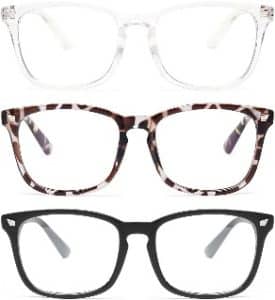 Source: uBuy |
|
Blue light blocking glasses have lenses with a special coating that filters out high-energy blue wavelengths. Wearers benefit from better sleep, reduced eye strain, and a lessened potential for eye damage.
These popular products yield a nice profit margin while being easy to source, store, and ship—making them a great choice for Amazon sellers. Plus, the market for these glasses isn’t dominated by established brands, so generic versions are poised to sell.
Clothing, Shoes & Jewelry
Although it requires pre-approval to sell in this category (which is a condition that we’ll cover below), clothing, shoes, and jewelry is one of Amazon’s most popular departments.
Items in this category are generally durable, lightweight, and easy to ship, making them ideal for profitability. Plus, Amazon is a convenient source of affordable apparel for millions of shoppers—especially when it comes to basics, like this profitable product idea.
Women’s Leggings | |
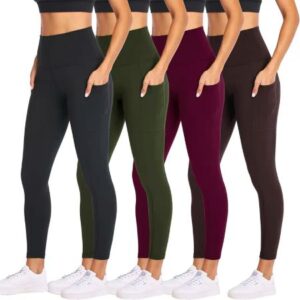 |
|
Leggings are immensely popular as athletic wear and everyday fashion. Revenue in the tights and leggings segment is projected at $13,463 million in 2022—and is expected to rise steadily in future years.
While name brands like Lululemon and Athleta take up space in the market, many consumers seek affordable alternatives on Amazon. Plus, abundant variations make it possible to sell products your competitors don’t provide. Consider sourcing novel patterns, designs, or features—such as compression or fat-burning sweat induction.
Women’s Shapewear | |
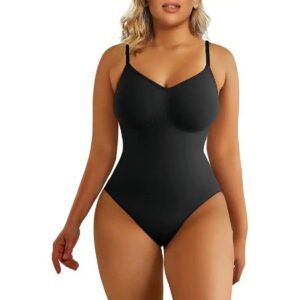 |
|
There’s a significant rise in the body shaping trend, hugely because of celebrities and their sculpted appearances (and social media influence and endorsement). It has a low entry price point and is easily sourced, too. Most consumers are looking for reasonably-priced shapewear that works and do not really go for branded ones, as seen on Amazon’s listing of the product—second in its category as of this writing.
Beauty Tools & Accessories
According to The State of the Amazon Seller report by JungleScout, the Beauty & Personal Care category is the top-ranking category with the most profitable sellers (21% net margin and up). And even with consumers saying they are buying less due to increased inflation, categories such as groceries, pet supplies, and beauty & personal care have seen an increase in purchasing in the third quarter of 2023, according to Jungle Scout’s latest Consumer Trends report.
Dermaplaning Tools | |
 |
|
Dermaplaning tools are top-selling beauty accessory products and even went viral on TikTok. They were first used as an in-office treatment performed by aestheticians and dermatologists. Now, many safe dermaplaning tools can be bought for personal and home use.
Sports & Outdoors
This category is strong due to the workout equipment listed in it. Exercise gear is durable by nature and tends to be evergreen—but the first quarter of each year brings a sharp increase in its demand (thanks to New Year’s resolutioners).
Furthermore, the sale of fitness equipment has jumped dramatically since shelter-in-place orders initially took effect. According to the Ecommerce Times, consumer spending in the category gained thousands of percentage points in 2020—breaking records at astronomical highs. Sales have slowed slightly since then, but consumer appetite for workout gear—such as this successful product—is still rampant.
Resistance Bands | |
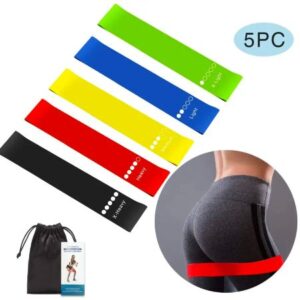 |
|
Resistance bands come in a variety of forms that are used for different workouts. They’re often sold as assorted sets, but can also be found by each type individually. This makes room for p[IMG]lenty of selling options when sourcing and listing them.
Pepper Spray | |
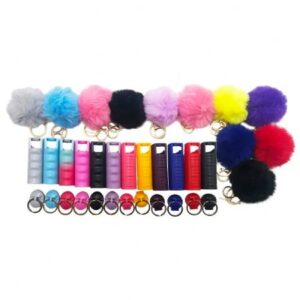 |
|
Pepper sprays are another best seller in Amazon that completes all our recommendations—easy to ship, lightweight, low entry, and evergreen.
Baby
Baby care products are always considered hot items on Amazon, particularly those that need to be replenished regularly, such as diapers, bath care products, and hygiene tools.
Baby products are overseen by a couple of regulatory agencies—Consumer Product Safety Commission (CPSC), Food and Drug Administration (FDA), and National Highway Traffic Safety Administration (NHTSA), so I recommend going with products that don’t need approval from those agencies, such as the one listed below.
And while this category needs Amazon approval first, many less serious Amazon sellers will not even apply for this category—meaning if you get approved, you will have lesser competition compared to a less-restricted and popular category (such as Home & Kitchen, for example).
Baby Wipes | |
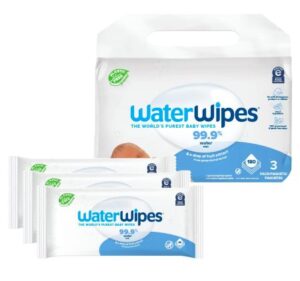 |
|
Baby wipes is a product that you can sell via private label. If you have a strong brand and following, this can be a product with recurring revenue, as it’s a consumable item and needs to be repurchased all the time.
Electronics
The electronics category is a tricky one because it’s dominated by large, established brands—and the majority of top-selling electronics are sold by Amazon itself.
For beginners to succeed in this department, it’s best to find a niche, accessory product. Thankfully, goods that fit this description still fly off the virtual shelves—such as this high-ranking product idea.
Wireless Earbuds | |
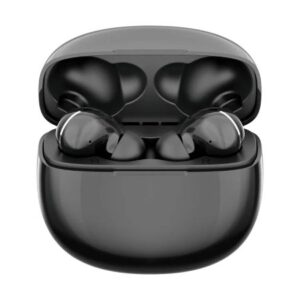 |
|
Wireless earbuds are a bit lower in the best seller rank in this category, but keep in mind that the Electronics category in Amazon is dominated by Amazon brand products (Alexa, Echo, Fire Stick, Kindle, and more). It has great search volume and plenty of options in wholesale marketplaces.
- In-house order fulfillment
- Outsourced fulfillment through a third-party provider
- Outsourced fulfillment through FBA (Fulfillment by Amazon)
Strategies to Find Best Products to Sell in Amazon
Jungle Scout reports that 64% of Amazon sellers are profitable within their first year—and one of the biggest factors in that distinction is the products they sell. So how do you choose successful items to invest in?
Your first objective is to look at what makes an item profitable for Amazon sellers. Qualities to consider include ship weight, sturdiness, category popularity, competition, wholesale price, Amazon seller fees, and shipping costs.
It’s also crucial to evaluate demand, as well as any restrictions that may complicate (or prohibit) sale.
Certain categories attract more sales on the platform than others—which is important to keep in mind as you build your Amazon brand. As shown below, health & beauty, fashion items, electronics, and other products are expected to see significant growth in the coming years.
Here are steps and tips to find successful items to sell on Amazon:
Use Amazon Sales Data
Amazon allows anyone to view the most popular products based on sales data using the Amazon Best Sellers list. This list is a great jump-off point for product research and finding successful item ideas.
The Best Sellers List is organized by standard departments (such as Baby and Electronics) and subcategories of those departments (like Strollers and Headphones). You can toggle between sub-lists to view multiple metrics, such as:
- New Releases: Amazon listings with a trending upswing in sales, as well as future products soon to be available.
- Movers and Shakers: The biggest gainers in sales rank over the past 24 hours. This list can point out hot trends or seasonality.
- Most Wished For: The items most often added to Amazon Wishlists and Registries. It doesn’t show purchases, but still gives you an idea of customer interest.
- Gift Ideas: The most popular products purchased as gifts. This page is a good indicator of best sellers within niche categories for many specialty, seasonal, and holiday-related items.
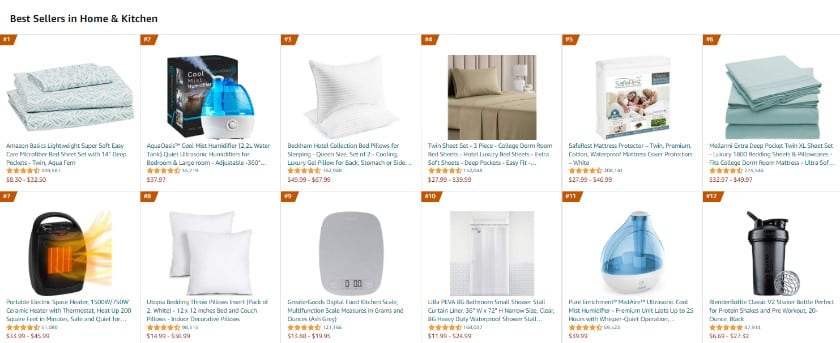
Amazon’s Best Sellers List ranks products by sales and popularity.
Browse these lists to identify promising categories and products. Look for generic items that don’t rely on the appeal of a brand name, and those that would be easy to ship.
Additionally, focus on products with a low price. For beginners, it’s generally best to sell relatively inexpensive products; this minimizes the financial risk associated with selling and allows you to diversify your inventory. Fortunately, the majority of Amazon’s best sellers tend to be affordable goods.
Once you’ve gotten a feel for consumer appetite—as well as some ideas for profitable products—you can begin keyword research to hone in on the details.
Conduct Keyword Research
For an item to move well on Amazon, it must be popular and easily found by shoppers. Use keyword research to determine whether a potential product has the right balance of traffic and competition to be successful.
Amazon’s platform uses a proprietary search engine that functions similarly to Google. Searchers enter keywords to discover listings, and the data from those searches can be used to gain valuable insight into these factors.
Finding high-traffic keywords with low-to-moderate competition is the best formula for a successful product idea.
There are many Amazon seller tools designed to help you do just that. Jungle Scout is an industry favorite due to its robust paid features that go beyond the scope of keyword research. But if you’re seeking a free tool, Magnet2 lets users search for two keywords per day without paying a dime, and AMZScout offers a seven-day free trial.
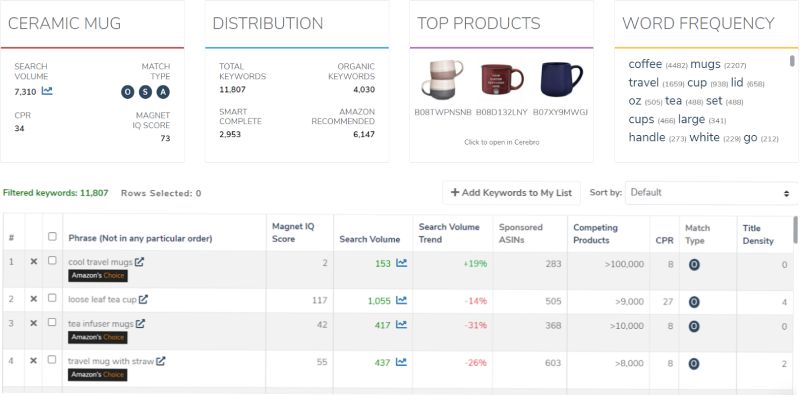
Magnet2 is a keyword researcher provided by Helium10—a powerful suite of seller tools for Amazon and Walmart. This feature delivers search volume, trend info, competition level, top products, and more.
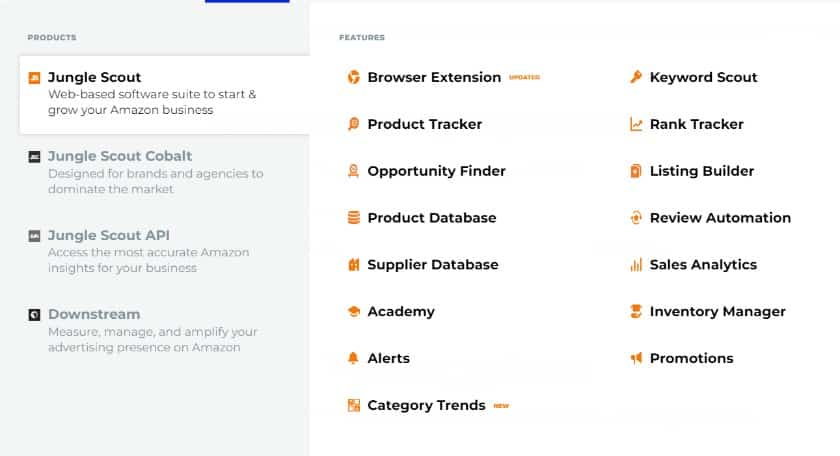
Jungle Scout’s keyword research tool is advanced, and the suite comes with a host of other features to help you sell. Pricing starts at $29/month.
These tools are best used in combination with searches done from the marketplace itself. Take a look at the results that each potential product keyword gives you—including quantity, competing brands, and product specifics (as shown below).
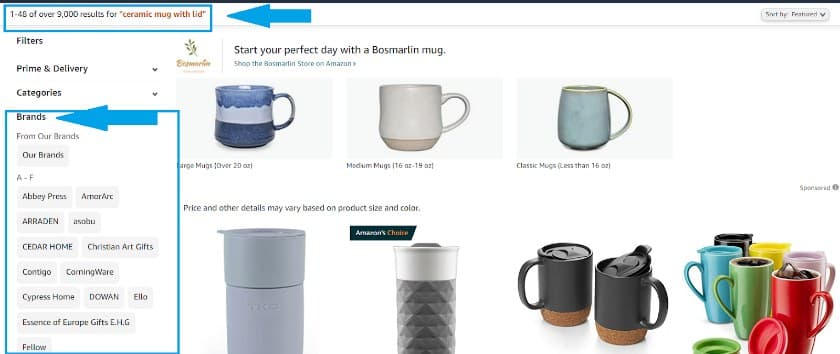
Amazon search results pages are great sources of information on potential products and categories.
Here’s what to look for when conducting keyword research:
- High search volume: Seek product keywords with more than 500–1,000 monthly searches.
- Low competition: Consider the total number of competing products as well as the brands dominating making those sales (you don’t want to compete against Amazon itself or other dominating brands).
- Easy-to-find items: Prioritize items that customers can search for and list under multiple keywords and product categories.
- Low BSR: Look for similar product keywords that have a low Amazon Best Seller Rank (BSR). This number represents how frequently a product is selling on Amazon—the lower the BSR, the better the sales. What’s considered a good BSR varies by category, but under 5,000 is generally promising.
- Customer reviews: Seek out similar product listings with a sizable number of reviews, and aim to prioritize goods with positive ratings.
Consider Amazon Product Restrictions
Amazon imposes a hefty list of product restrictions that go beyond standard FTC rules and guidelines. These restrictions should be considered when choosing which products to sell—especially for beginner and intermediate sellers.
If you plan to use Fulfillment by Amazon (FBA) as your fulfillment strategy, be sure to consider FBA’s product restrictions in addition to Amazon’s list.
Restricted & Prohibited Products
Amazon’s restricted products include those regulated by state and/or federal law, as well as items subject to condition requirements or prone to misuse and misrepresentation.
Some restricted products—such as tobacco, electronic cigarettes, and lockpicking devices—are prohibited altogether. But most restricted goods are permitted to be sold as long as they follow the marketplace’s strict regulations, which vary by item.
These requirements are mostly straightforward and simple to follow, so don’t nix a potential product for being on the restricted list.
Amazon’s current list of product restrictions is as follows:
- Alcohol
- Animals and Animal-Related Products
- Art – Fine Art
- Art – Home Decor
- Automotive and powersports
- Composite Wood Products
- Cosmetics and Skin/Hair Care
- CPAP Cleaning and Disinfecting Devices
- Currency, Coins, Cash Equivalents, and Gift Cards
- Dietary Supplements
- Drugs and drug paraphernalia
- Electronics
- Explosives, weapons, and related items
- Export Controls
- Food and Beverage
- Gambling and Lottery
- Hazardous and prohibited items
- Human Parts & Burial Artifacts
- Jewelry and Precious Gems
- Laser products
- Lighting
- Lock Picking and Theft Devices
- Medical devices and accessories
- Offensive and Controversial Materials
- Other restricted products
- Pesticides and pesticide devices
- Plant and Seed Products
- Postage meters and stamps
- Recalled products
- Recycling electronics
- Refrigerants: Ozone-Depleting Substances and Substitutes
- Strike anywhere matches
- Subscriptions and Periodicals
- Surveillance Equipment
- Tobacco and Tobacco-Related Products
- Warranties, Service Plans, Contracts, and Guarantees
- Upholstered Furniture, Bedding, and Other Quilted Products
- Ink and toner cartridges
- Software
- Textbooks
Beyond these regulations, any items that claim to be FDA-approved or host the FDA logo in associated images need to meet additional requirements. See the FDA website for more information.
In California, a range of products are subject to further regulation. Read about additional restrictions here.
If you plan to list your goods for international sale, you are responsible for researching and complying with the receiving country’s laws and regulations.
Pre-approval Category Requirements
Amazon’s restrictions also include a pre-approval requirement to list products in certain categories, such as jewelry, watches, music, collectibles, and more. The pre-approval process requires additional time, money and effort, and approval isn’t guaranteed—which prevents many sellers from dealing in these categories. According to a recent Jungle Scout survey, only 7% of Amazon sellers are successfully selling in restricted categories.
The exact requirements and restrictions are different for each gated category—and certain products themselves have specific rules—but many include paying fees, passing performance checks, and submitting additional documentation. Amazon’s current list of restricted categories is as follows:
- Postage stamps
- Collectible Coins
- Entertainment Collectibles
- Fine Art
- Holiday Selling Requirements in Toys and Games
- Jewelry
- Join Amazon Subscription Boxes
- Made in Italy
- Music and DVD
- Requirements for selling Automotive and Powersports products
- Services
- Sports Collectibles
- Streaming Media Players
- Video, DVD, and Blu-ray
- Watches
- Sony PlayStation Requirements in Video Games
Your willingness and ability to apply for pre-approval will decide how viable these categories are. Selling in gated categories can provide an advantage over your competitors, but may not be worth the challenge for Amazon beginners.
Read the Reviews
Reviews are a make-or-break factor when it comes to a seller’s profitability. That’s why it’s beneficial to focus on products that generate a wealth of positive reviews. This characteristic speaks to the product itself, but also the customers it attracts—paving the way for a successful listing.
That being said, there’s a hidden benefit to scouting out less-than-perfect reviews as part of your product research:
One surefire way to land on a successful product is to fill a gap in the market. Amazon product reviews are a tremendously helpful resource for identifying consumer pain points—and turning them into listings with a competitive edge.

This top-selling product that appears under the keyword “Ceramic Mug with Lid” has a major design flaw.
By sourcing a product that solves the consumer issues mentioned in reviews, your listing is more likely to outsell the direct competition. In this case, a ceramic mug with a lid that’s both microwave- and dishwasher-safe would create strong appeal.
Calculate Profitability
Once you’ve zeroed in on a promising product to sell, it’s vital to crunch the numbers before investing. The products you sell must make a great enough margin to cover your overhead expenses—including Amazon fees—and still maintain profitability.
There are a number of tools you can use to calculate a potential item’s profitability. The simple, free website Salecalc allows you to input granular details like product cost, shipping method, packaging info, and Amazon seller plan type. It then factors in Amazon’s various fees and calculates your potential net profit, return, and margin.
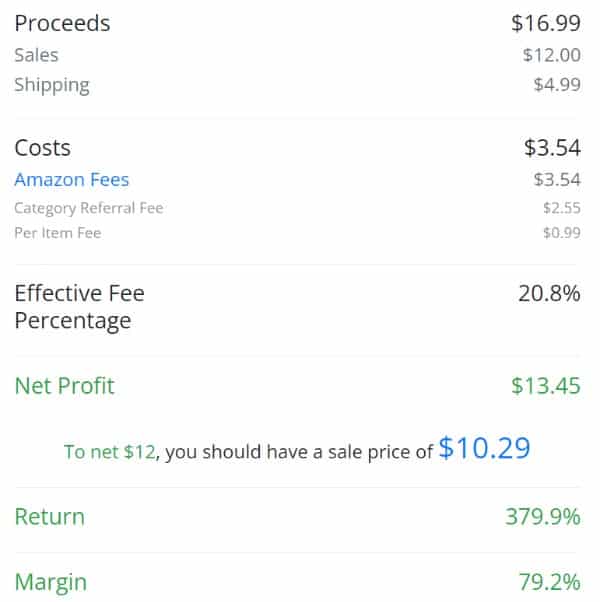
Salecalc delivers precise calculations.
Other apps are available that deliver this same function along with a host of separate features to help you manage your Amazon sales. The top three picks are compared below.
Amazon Seller Apps
Jungle Scout | Sellics | InventoryLab | |
|---|---|---|---|
Cost to use | $29–$129/month (depending on plan level) | Free to $1,249/month (depending on plan level) | $40–$49/month 30-day free trial |
Profit tracking and calculator | ✓ | ✓ | ✓ |
Barcode scanner | ✕ | ✕ | ✓ |
Supplier database | ✓ | ✕ | ✕ |
Inventory management | ✕ | ✓ | ✓ |
Review management | ✕ | ✓ | ✕ |
Keyword research | ✓ | ✓ | ✕ |
Competitor monitoring | ✓ | ✓ | ✓ |
Expense tracking | ✕ | ✓ | ✓ |
Product research | ✓ | ✓ | ✓ |
Platforms | Web | iOS, Android, web | iOS, Android, web |
Where to Source Products to Sell on Amazon
Many Amazon sellers source their products from marketplaces like Alibaba and AliExpress, where the majority of goods are imported. This enables sellers to buy products in bulk for very low prices, which makes room for greater margins.
To learn more, read our ultimate guide to importing from China.
Other options include visiting in-person trade shows and merchandise marts. Here are some of the most popular ways to source products to sell on Amazon:
Alibaba
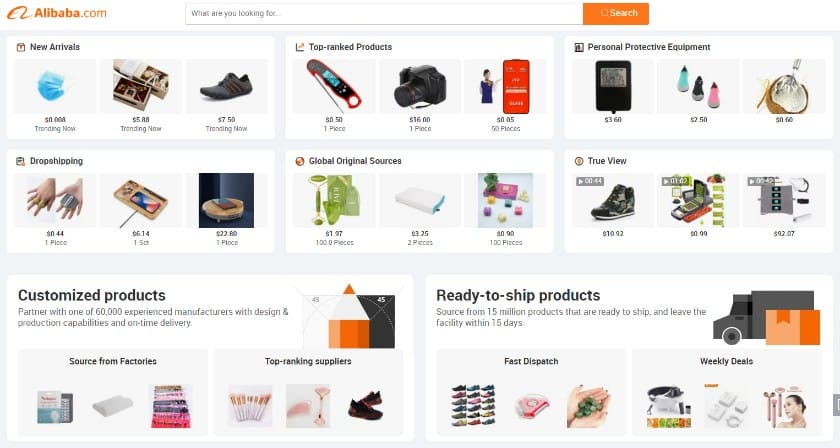
With millions of merchants and businesses, Alibaba handles the most ecommerce business in the world. While headquartered in China, anyone can buy wholesale goods on the platform, and it hosts merchants from around the world.
Alibaba is perfect for Amazon sellers wanting to source quickly with a level of risk protection. Alibaba has features that support fast quote turnaround times and delivery guarantees.
You may contact each vendor to negotiate terms or discuss customizations—or opt to place an order straightaway. Alibaba also has resources to help you learn all about the product sourcing and importing process.
Many wholesalers on Alibaba have a strict MOQ or Minimum Order Quantity, although sample and trial orders can usually be arranged.
AliExpress

AliExpress is a subsidiary of Alibaba, and both platforms operate similarly. The most notable difference is that AliExpress sales require no minimum order size.
Buyers typically pay more on AliExpress than on Alibaba since they aren’t getting wholesale prices. Amazon sellers wanting to test a niche idea or product before going full scale will appreciate AliExpress’ low costs without a large unit commitment.
Wholesale Merchandise Marts

A look inside AmericasMart in Atlanta (Source: AmericasMart)
Merchandise marts (MMs) are marketplaces similar to malls; they’re businesses located in one central area that host a variety of stores. The primary difference is that MMs cater specifically to the wholesale market.
Trade shows are similar sources for buying products in bulk, but they tend to be seasonal.
There are wholesale merchandise marts and trade shows that focus on every industry imaginable, but the most numerous and accessible markets are those catering to home, kitchenwares, gift, fashion, baby, and accessories categories.
Check out these popular merchandise marts:
- AmericasMart – Atlanta, GA
- theMart – Chicago, IL
- Dallas Market Center – Dallas, TX
- California Market Center – Los Angeles, CA
- Miami Merchandise Mart – Miami, FL
- New York MarketCenter – New York, NY
- Minneapolis Mart – Minneapolis, MN
- High Point Market – High Point, NC
- San Francisco Design Center – San Francisco, CA
Wholesale buyers’ markets and dropshipping catalogs are great places to find private-label opportunities, trending items, and new product releases for anything you’d like to sell. Many MMs are open to the public, but others require a DBA certificate or proof of business ownership to gain entry (so be sure to contact the market office before visiting).
Exploring your options as an Amazon seller? Consider these alternative sourcing methods:
Products to Sell on Amazon Frequently Asked Questions (FAQs)
Click through the tabs below to get answers to your frequently asked questions about what are the best products to sell on Amazon.
You can dropship products from AliExpress or Alibaba, sell your own private label products, publish your own books on Kindle Direct Publishing, sell wholesale goods, do retail arbitrage, or become an Amazon affiliate or Amazon Influencer.
When choosing products to sell on Amazon, keep it simple especially when you are just beginning. Avoid bulky products like furniture, stick to small and lightweight products. Choose ones with a moderate price point and those that are evergreen.
According to a survey by Jungle Scout, the top categories that sell the most on Amazon are the following: 1) home and kitchen, 2) beauty and personal care, 3) clothing, shoes and jewelry, 4) toys and games, and 5) health, household, and baby care.
Bottom Line
Amazon can be a highly rewarding marketplace for those looking to get into ecommerce or the reach of their retail store. But with 1.9 million active sellers potentially competing against you, selecting the right products to sell is a vital part of building your brand.
To be profitable, you’ll need to sell in-demand goods that yield a high enough margin to keep up with your expenses—especially Amazon’s numerous fees.